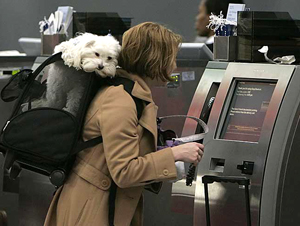
I believe puppy training or behavior training should be mandatory when getting a puppy or rescuing a dog from a shelter; especially if you have never owned a dog.
Sadly, to many people get a puppy on impulse. They just couldn't resist the cute puppy in the pet store; they take their cute bundle of fluff home with little knowledge of how much responsibility they have just taken on.
First, there is Potty Training. Potty training comes easy to some puppies and harder for others. Potty training should start the day you bring your puppy home.
In general puppies have to go potty 1 hour for each month they are. A 2 month (8 week) old puppy needs to go to potty every 11/2-2 hours during the day and about 2 to 3 times during the night. A 4 month old puppy needs to go about every 3-4 hours during the day and should be sleeping through the night.
Second, is biting, chewing, nipping and jumping. We have to teach our puppies what they can chew on and what they can't. Everything to your puppy is a toy or something to eat. It's so important to puppy proof your home as you would for a baby and to teach you puppy what they can and cannot play with.
Do you have a large or a small breed? If you have a large breed dog, DO NOT treat them like they are a small breed dog. If you don't want share your sofa with a 120 lbs dog, then don't let the 10 lbs puppy on the couch.
It's your responsibility to teach your puppy good manners, proper behavior and to respond to commands the first time you speak. This is what a training/behavior classes teaches you.
So many puppies are given to shelters and rescues centers between the ages of 7 months to 1 year because of bad behaviors; 99% of the time it's due to lack of training for both the owner and the dog.
There are far to many dogs that are in shelters and abused because of lack of knowledge. Before getting a puppy or a dog, research the breed; make sure the breed is the right fit for your family. Far to many times we pick our dogs on looks alone. This is a critical error and you should never pick your dog on looks alone.
Different breeds are bred for different jobs. If you are a couch potato and do not enjoy really long walks, a Husky would defiantly be the wrong choice. If you are really active and enjoy running and biking, a Bull Mastiff or Great Dane would not be a good choice for you; a Husky or a hunting breed like a German Pointer or Doberman Pincer would be a better fit for your lifestyle. Click here to read about different breeds of dogs.
Remember a dog is a part of your family, make sure you pick the right dog for your families wants and needs.
Also, make sure to sign up for a training class; either private or a group class. Training is more about teaching you to teach your dog.









